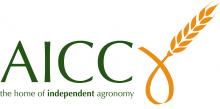Table of areas and yields of major UK crops from Defra statistics.
| Crop | Area M ha | Yield t/ha | Production Mt |
| Wheat | 1.8 | 7.9 | 14 |
| Barley | 1.2 | 6.1 | 7.4 |
| Oilseed | 0.5 | 3.3 | 1.6 |
| Field Beans | 0.17 | 3.5 | 0.6 |
| Potatoes | 0.14 | 45 | 5.5 |
| Field Vegetables | 0.5 |
The vast majority of arable crops are annual, with seeds sown in autumn or spring and harvested in summer. Crop choice and rotations differ with farming system, soil type, climate and market access, but most arable farms grow wheat as a main crop with other crops grown as breaks.
The growing of crops is supported by the agronomy supply industry, represented by AIC. Independent agronomists are represented by AICC.
Most crops have had a levy charged on their sale, either statutory or voluntary, which is used to support marketing, research and knowledge exchange for growers. AHDB represents cereals and oilseeds, PGRO represents peas & beans and BBRO represents sugar beet.
Explore the Related Topics in the side bar, or add your own content, projects or questions below...








